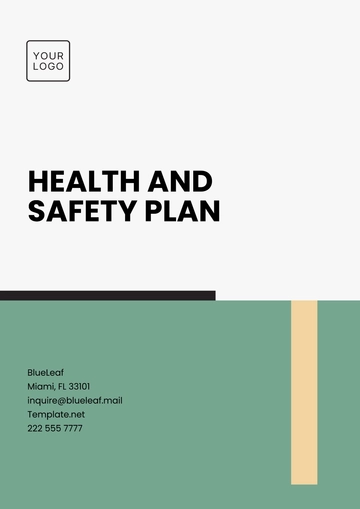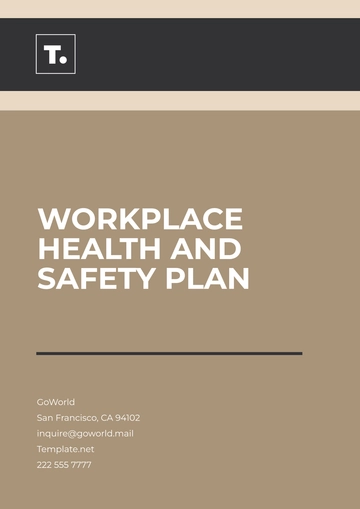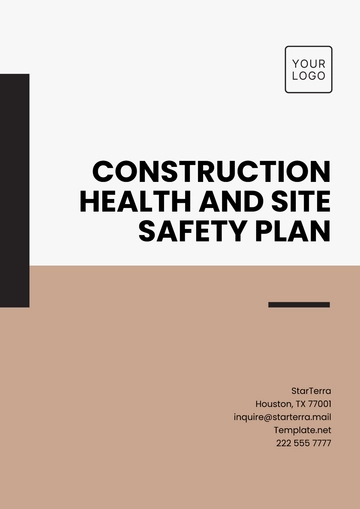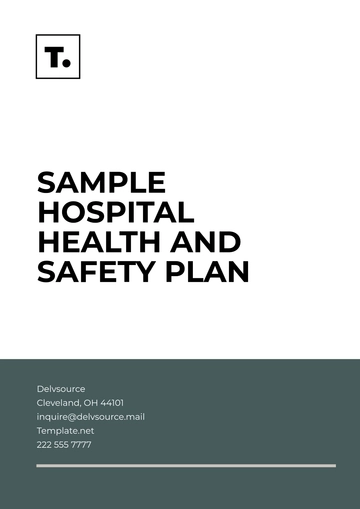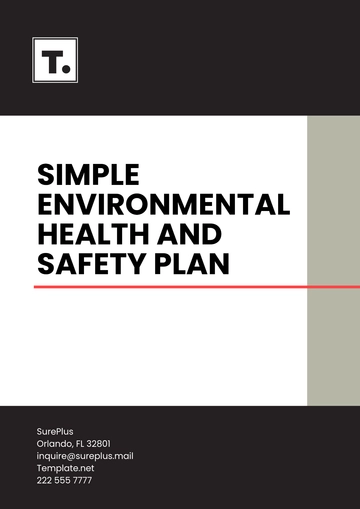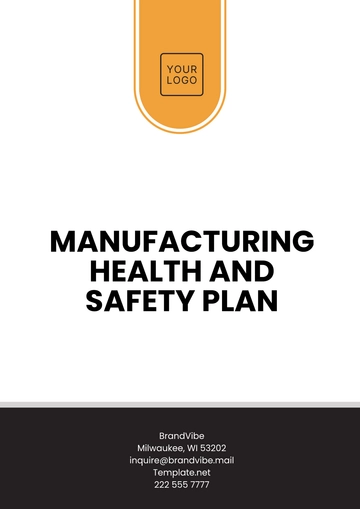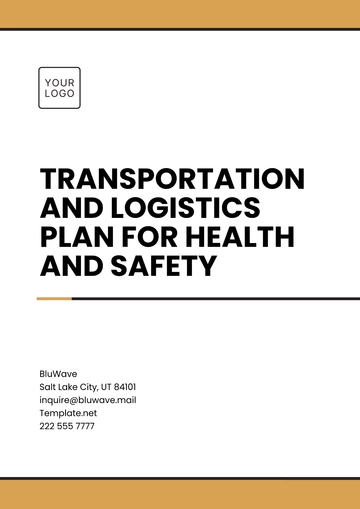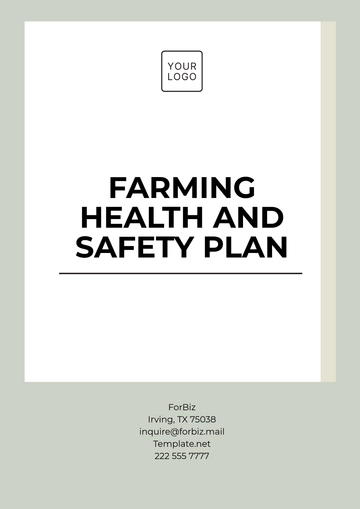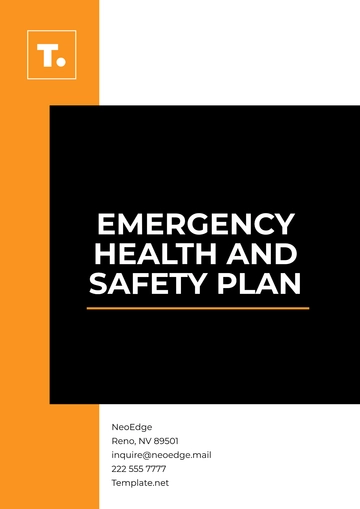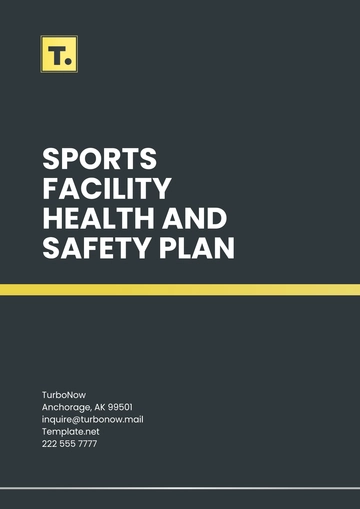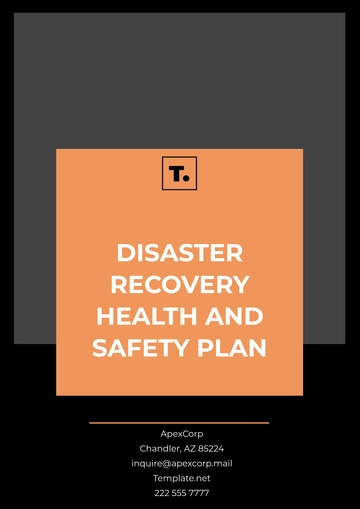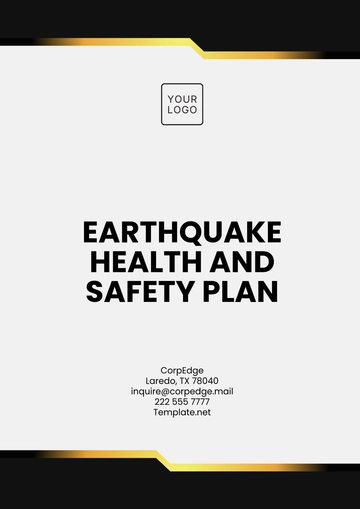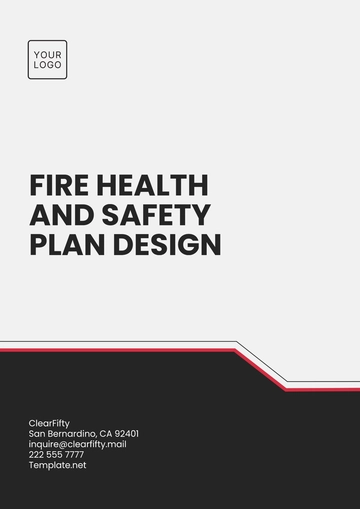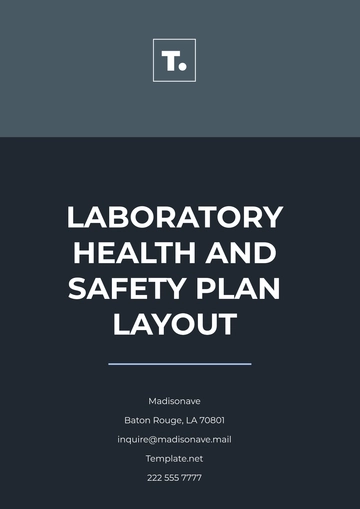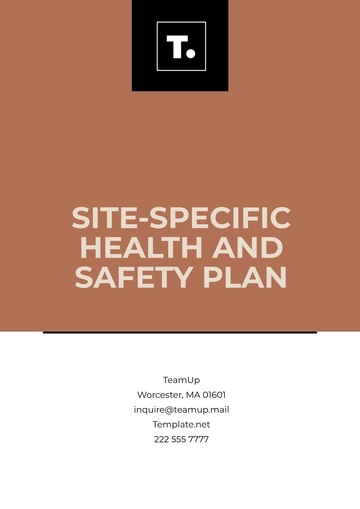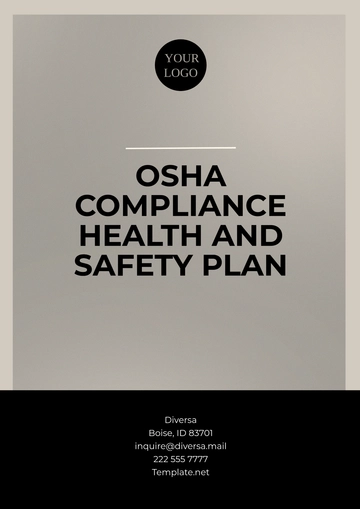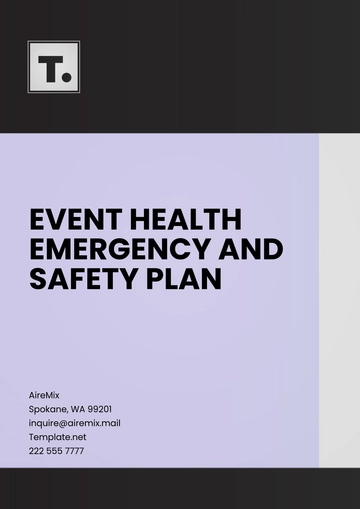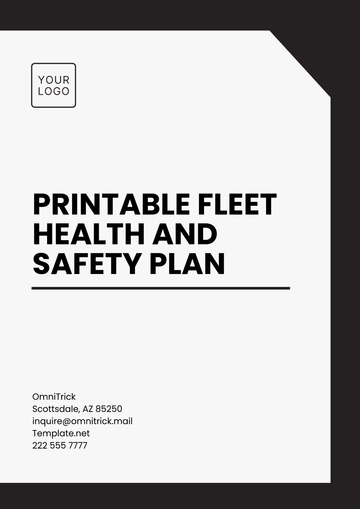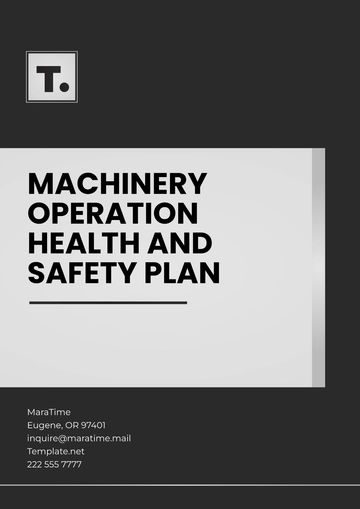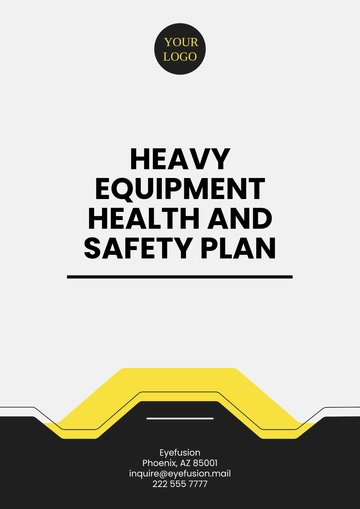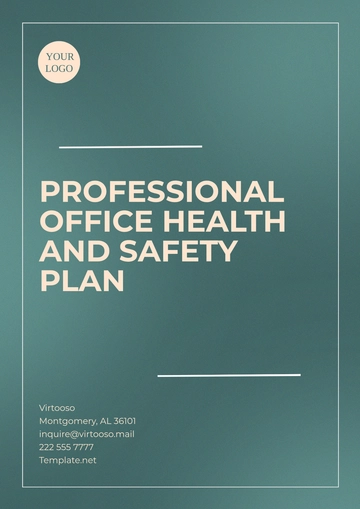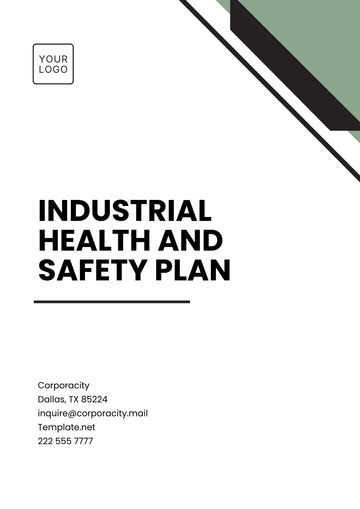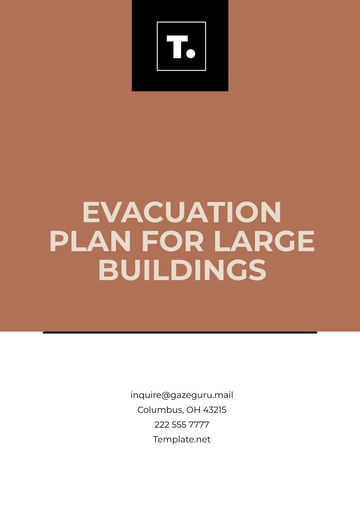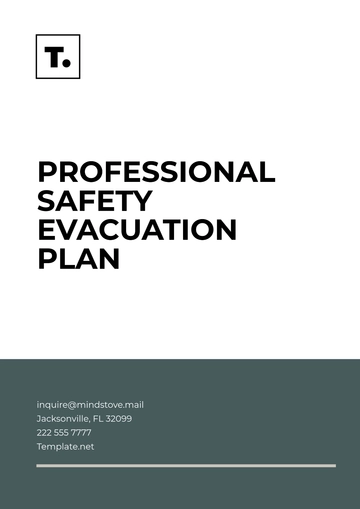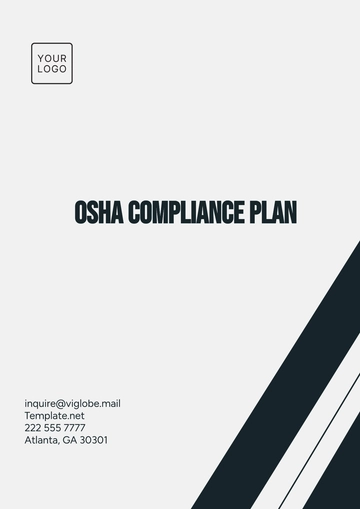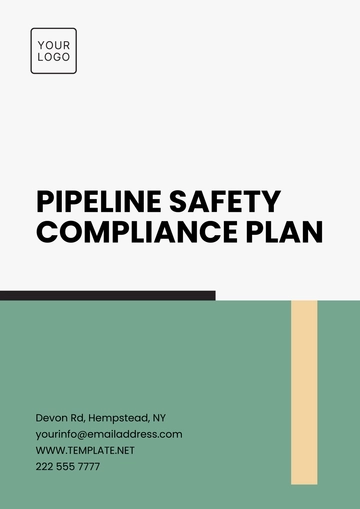Free Health & Safety Safety Management Plan
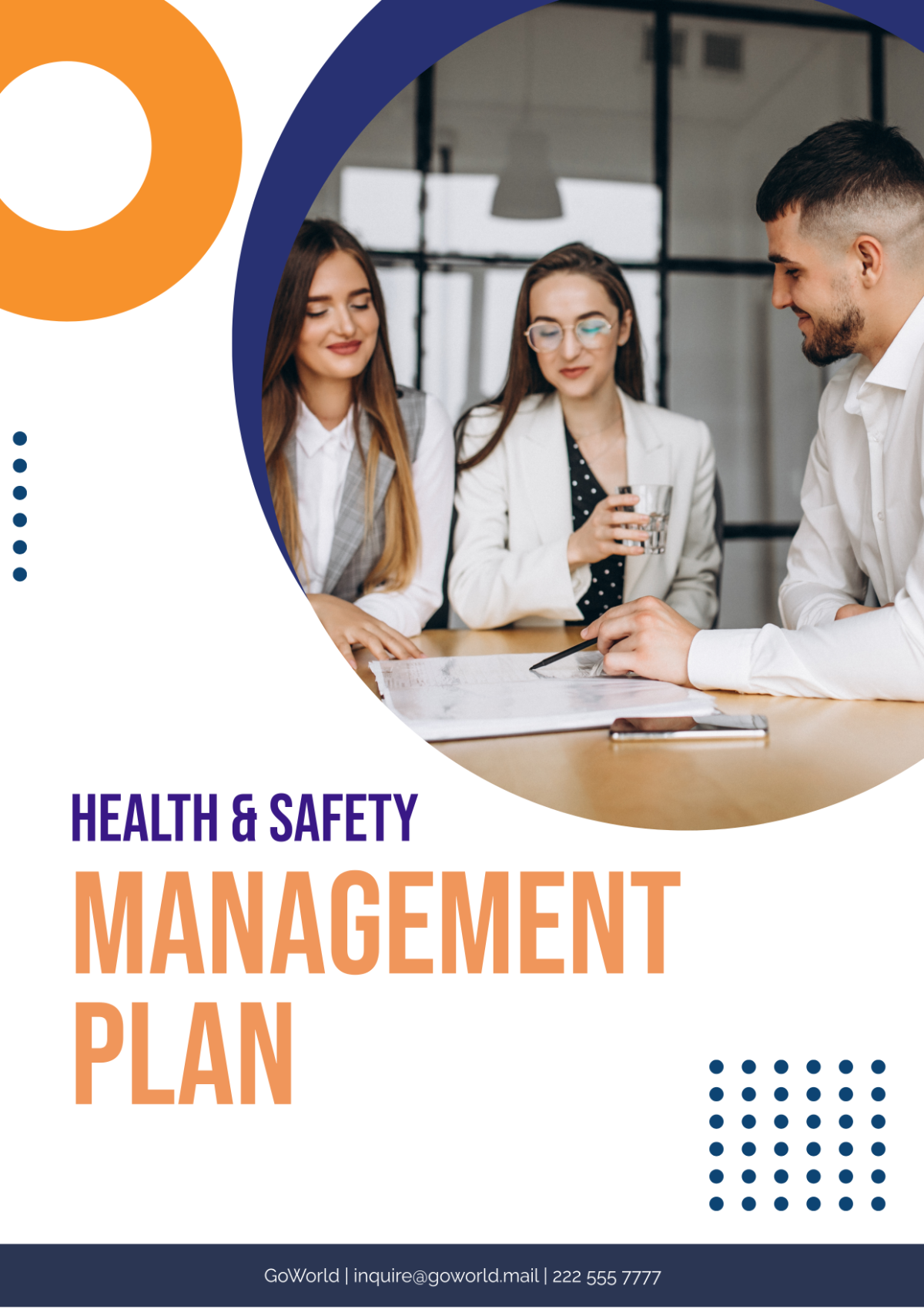
I. Introduction
[Your Company Name] is dedicated to ensuring a safe and healthy work environment for all employees, clients, and visitors. Our Health & Safety Management Plan (HSMP) is crafted to meet OSHA regulations and other pertinent standards, establishing protocols and procedures to prevent accidents, minimize risks, and address health hazards effectively. This plan reflects our commitment to maintaining high safety standards and fostering a culture that prioritizes the well-being of everyone involved.
Our strategy for health and safety includes proactive risk management, comprehensive training programs, and a commitment to continuous improvement. Regular updates to this plan will incorporate changes in regulations, industry best practices, and organizational needs. Through collaborative efforts and clear communication, [Your Company Name] strives to uphold a safe and healthy workplace, reinforcing our dedication to the safety and productivity of our entire community.
II. Objectives
This Health & Safety Management Plan is designed with key objectives to enhance workplace safety and health. Our primary goals are to foster a safe and supportive work environment by prioritizing employee well-being, identifying and addressing potential hazards proactively, and ensuring full compliance with all relevant regulations. By focusing on these objectives, we aim to create a culture of safety that protects our employees, minimizes risks, and aligns with industry best practices. Each objective is critical in driving our commitment to a safe workplace, promoting continuous improvement, and reinforcing [Your Company Name]'s dedication to the health and safety of our entire workforce.
The primary objectives of this plan are to:
Promote the health and safety of all employees.
Identify and mitigate workplace hazards.
Ensure compliance with relevant health and safety regulations.
III. Health & Safety Policies
To uphold a safe and secure work environment, [Your Company Name] has established the following key health and safety policies:
Compliance with OSHA Standards: Adherence to Occupational Safety and Health Administration (OSHA) standards is a fundamental aspect of our health and safety approach. We are committed to meeting or exceeding all applicable OSHA regulations to ensure a safe workplace. This includes regular reviews and updates of safety practices, conducting thorough risk assessments, and maintaining up-to-date documentation. By aligning our practices with OSHA requirements, we aim to minimize hazards and protect the health and safety of our employees.
Mandatory Safety Training Programs: Safety training is a cornerstone of our health and safety management. All employees are required to participate in mandatory safety training programs, which cover essential topics such as hazard recognition, emergency response procedures, and safe work practices. These programs are designed to equip employees with the knowledge and skills needed to identify and address potential hazards effectively. Regular refresher courses and updates ensure that our workforce remains informed about the latest safety protocols and industry best practices. Training sessions are tailored to specific job roles and responsibilities, ensuring relevance and effectiveness.
Use of Personal Protective Equipment (PPE): The use of personal protective equipment (PPE) is mandated to safeguard employees from workplace hazards. [Your Company Name] provides appropriate PPE based on job requirements and potential risks. This includes, but is not limited to, safety goggles, gloves, hard hats, and hearing protection. Employees are required to wear the designated PPE at all times while performing tasks that pose a risk to their health or safety. Regular inspections and maintenance of PPE are conducted to ensure its effectiveness and compliance with safety standards. Additionally, employees receive training on the correct use, maintenance, and disposal of PPE to maximize its protective benefits.
These policies are integral to creating a safe working environment and reflect our commitment to the health and safety of our workforce. Through strict adherence to these guidelines, we strive to maintain a proactive safety culture and continuously improve our health and safety practices.
IV. Risk Assessment & Hazard Identification
Effective risk assessment and hazard identification are critical components of our health and safety strategy at [Your Company Name]. This section outlines our systematic approach to identifying potential hazards within the workplace and evaluating the associated risks. By proactively assessing risks, we aim to implement appropriate control measures to prevent accidents and health issues, ensuring a safer working environment for all employees.
The following table provides a comprehensive overview of identified hazards, their associated risks, and the corresponding control measures in place. This tool is essential for tracking and managing workplace hazards, enabling us to continuously refine our safety practices and respond promptly to any emerging risks. Through diligent risk assessment and hazard identification, we reinforce our commitment to maintaining a secure and healthy workplace.
Hazard | Likelihood | Severity | Preventive Measures |
|---|---|---|---|
Slips and trips | High | Medium | Housekeeping, anti-slip mats, caution signs |
Fire | Low | High | Fire alarms, extinguishers, fire drills |
Chemical exposure | Medium | High | PPE, proper labeling, safety data sheets |
The table provides a clear overview of key workplace hazards, their likelihood, and severity, along with the preventive measures implemented to address them. For instance, slips and trips are categorized as high likelihood but medium severity, mitigated through housekeeping practices, anti-slip mats, and caution signs. Fire hazards, though low in likelihood, have high severity, with preventive measures including fire alarms, extinguishers, and regular drills. Chemical exposure presents a medium likelihood and high severity risk, managed by using personal protective equipment (PPE), proper labeling, and maintaining safety data sheets. This structured approach ensures targeted risk management and enhances overall workplace safety.
V. Responsibility & Accountability
Effective health and safety management requires clear roles and responsibilities across all levels of the organization. The following table delineates the specific responsibilities assigned to management, supervisors, and employees to ensure a comprehensive approach to workplace safety. Each role is crucial in implementing and maintaining safety protocols, monitoring compliance, and addressing any safety concerns that arise. By clearly defining these responsibilities, [Your Company Name] fosters a collaborative environment where everyone contributes to a safe and healthy workplace.
Role | Responsibilities |
|---|---|
Management | Ensure implementation of safety policies, allocate resources, and oversee overall safety practices. |
Supervisors | Monitor daily activities, ensure compliance with safety protocols, and address any safety concerns promptly. |
Employees | Follow established safety protocols, use personal protective equipment (PPE), and report any hazards or safety issues to supervisors. |
Effective health and safety management hinges on the active participation and commitment of everyone within the organization. Clear delineation of responsibilities ensures that safety policies are implemented consistently and that all employees are aware of their roles in maintaining a safe work environment. Through the diligent execution of these responsibilities, [Your Company Name] strives to uphold high safety standards and foster a culture of accountability, ultimately contributing to a safer and more productive workplace for all.
VI. Emergency Procedures
Having robust emergency procedures in place is vital for managing unforeseen incidents effectively. The table below outlines the specific procedures established by [Your Company Name] to handle various emergency scenarios. Each procedure is designed to ensure a prompt and organized response, minimizing risks and ensuring the safety of all personnel.
The table details our strategies for addressing fires, medical emergencies, and chemical spills. By clearly defining these procedures, we aim to facilitate quick, efficient action in critical situations, helping to protect both employees and the workplace environment.
Emergency Scenario | Procedures |
|---|---|
Fire | Implement evacuation plans, establish designated assembly points, and maintain a fire warden system. |
Medical Emergencies | Provide first aid kits, maintain contact information for medical personnel, and activate the emergency response team. |
Chemical Spills | Follow containment procedures, use spill kits, and contact emergency response numbers as needed. |
VII. Training & Education
At [Your Company Name], maintaining a well-informed and safety-conscious workforce is paramount. To ensure that all employees are thoroughly versed in safety protocols and procedures, we conduct regular and comprehensive training sessions. These training initiatives are designed to equip employees with the knowledge and skills necessary to handle various workplace scenarios effectively and to reinforce our commitment to maintaining a safe work environment.
Orientation for New Hires: All new employees undergo a detailed orientation program upon joining [Your Company Name]. This orientation includes an overview of our health and safety policies, procedures, and emergency protocols. New hires are introduced to the company's safety culture and provided with essential information on risk management, safe work practices, and the use of personal protective equipment (PPE). This foundational training ensures that new employees start their roles with a clear understanding of their responsibilities and the importance of adhering to safety standards.
Annual Safety Drills: To keep safety practices fresh and top-of-mind, [Your Company Name] conducts annual safety drills. These drills simulate real-life emergency scenarios such as fire evacuations and medical emergencies. Participation in these drills helps employees practice and refine their response skills, ensuring they are prepared to act swiftly and effectively in actual emergencies. The drills also provide an opportunity to evaluate and improve our emergency procedures and protocols based on feedback and observed performance.
Specialized Training for High-Risk Tasks: Certain job functions at [Your Company Name] involve higher levels of risk and therefore require specialized training. Employees engaged in high-risk tasks, such as operating heavy machinery or handling hazardous materials, receive targeted training tailored to their specific roles. This specialized training covers advanced safety procedures, proper equipment use, and hazard recognition relevant to their tasks. It is designed to minimize risks and ensure that employees are fully prepared to perform their duties safely.
Through these training and education programs, [Your Company Name] aims to foster a proactive safety culture, enhance employee competency, and ensure a consistently safe working environment. Regular updates and continuous learning are integral to maintaining high safety standards and protecting our workforce.
VIII. Monitoring & Review
To maintain an effective Health & Safety Management Plan at [Your Company Name], continuous monitoring and periodic reviews are essential. This ongoing process ensures that our safety protocols remain current, effective, and aligned with evolving risks and regulatory requirements. Our commitment to safety involves the following key activities:
Quarterly Safety Audits: We conduct comprehensive safety audits every quarter to evaluate the effectiveness of our health and safety measures. These audits involve a detailed inspection of workplace practices, safety equipment, and compliance with established procedures. By systematically assessing various aspects of our safety management, we can identify potential areas for improvement and ensure that safety practices are consistently followed. The results of these audits are used to address any deficiencies and implement necessary changes promptly.
Annual Review of Policies and Procedures: Our health and safety policies and procedures undergo an annual review to ensure they remain relevant and effective. This review process involves evaluating current safety practices against industry standards and regulatory updates. Any changes in legal requirements or best practices are incorporated into our policies to maintain compliance and enhance safety measures. This regular update ensures that [Your Company Name] remains proactive in addressing new risks and adapting to changes in the regulatory landscape.
Employee Feedback and Incident Reports: Employee feedback is a crucial component of our monitoring process. We encourage staff to provide input on safety practices and report any concerns or incidents. Incident reports are thoroughly reviewed to identify root causes and prevent future occurrences. Employee feedback helps us gauge the effectiveness of our training programs and safety measures, ensuring that our approach to safety is responsive to the needs of our workforce.
Through these monitoring and review activities, [Your Company Name] commits to maintaining a dynamic and responsive Health & Safety Management Plan, ensuring a consistently safe and compliant workplace environment.
[Your Company Name] is dedicated to maintaining a safe and healthy work environment through rigorous implementation of our Health & Safety Management Plan. By adhering to established policies, conducting regular training, and continuously monitoring and reviewing our practices, we aim to mitigate risks and ensure compliance with all relevant regulations. Our proactive approach to safety reflects our commitment to the well-being of our employees and the overall success of our organization. Together, we uphold the highest standards of health and safety, fostering a secure and productive workplace for all.
- 100% Customizable, free editor
- Access 1 Million+ Templates, photo’s & graphics
- Download or share as a template
- Click and replace photos, graphics, text, backgrounds
- Resize, crop, AI write & more
- Access advanced editor
Organize and implement safety protocols with Template.net's Health & Safety Management Plan Template. Fully editable and customizable, this template provides a structured approach to managing workplace safety. Easily adapt it to your specific needs, editable in our Ai Editor Tool, for a professional and effective management plan.
You may also like
- Finance Plan
- Construction Plan
- Sales Plan
- Development Plan
- Career Plan
- Budget Plan
- HR Plan
- Education Plan
- Transition Plan
- Work Plan
- Training Plan
- Communication Plan
- Operation Plan
- Health And Safety Plan
- Strategy Plan
- Professional Development Plan
- Advertising Plan
- Risk Management Plan
- Restaurant Plan
- School Plan
- Nursing Home Patient Care Plan
- Nursing Care Plan
- Plan Event
- Startup Plan
- Social Media Plan
- Staffing Plan
- Annual Plan
- Content Plan
- Payment Plan
- Implementation Plan
- Hotel Plan
- Workout Plan
- Accounting Plan
- Campaign Plan
- Essay Plan
- 30 60 90 Day Plan
- Research Plan
- Recruitment Plan
- 90 Day Plan
- Quarterly Plan
- Emergency Plan
- 5 Year Plan
- Gym Plan
- Personal Plan
- IT and Software Plan
- Treatment Plan
- Real Estate Plan
- Law Firm Plan
- Healthcare Plan
- Improvement Plan
- Media Plan
- 5 Year Business Plan
- Learning Plan
- Marketing Campaign Plan
- Travel Agency Plan
- Cleaning Services Plan
- Interior Design Plan
- Performance Plan
- PR Plan
- Birth Plan
- Life Plan
- SEO Plan
- Disaster Recovery Plan
- Continuity Plan
- Launch Plan
- Legal Plan
- Behavior Plan
- Performance Improvement Plan
- Salon Plan
- Security Plan
- Security Management Plan
- Employee Development Plan
- Quality Plan
- Service Improvement Plan
- Growth Plan
- Incident Response Plan
- Basketball Plan
- Emergency Action Plan
- Product Launch Plan
- Spa Plan
- Employee Training Plan
- Data Analysis Plan
- Employee Action Plan
- Territory Plan
- Audit Plan
- Classroom Plan
- Activity Plan
- Parenting Plan
- Care Plan
- Project Execution Plan
- Exercise Plan
- Internship Plan
- Software Development Plan
- Continuous Improvement Plan
- Leave Plan
- 90 Day Sales Plan
- Advertising Agency Plan
- Employee Transition Plan
- Smart Action Plan
- Workplace Safety Plan
- Behavior Change Plan
- Contingency Plan
- Continuity of Operations Plan
- Health Plan
- Quality Control Plan
- Self Plan
- Sports Development Plan
- Change Management Plan
- Ecommerce Plan
- Personal Financial Plan
- Process Improvement Plan
- 30-60-90 Day Sales Plan
- Crisis Management Plan
- Engagement Plan
- Execution Plan
- Pandemic Plan
- Quality Assurance Plan
- Service Continuity Plan
- Agile Project Plan
- Fundraising Plan
- Job Transition Plan
- Asset Maintenance Plan
- Maintenance Plan
- Software Test Plan
- Staff Training and Development Plan
- 3 Year Plan
- Brand Activation Plan
- Release Plan
- Resource Plan
- Risk Mitigation Plan
- Teacher Plan
- 30 60 90 Day Plan for New Manager
- Food Safety Plan
- Food Truck Plan
- Hiring Plan
- Quality Management Plan
- Wellness Plan
- Behavior Intervention Plan
- Bonus Plan
- Investment Plan
- Maternity Leave Plan
- Pandemic Response Plan
- Succession Planning
- Coaching Plan
- Configuration Management Plan
- Remote Work Plan
- Self Care Plan
- Teaching Plan
- 100-Day Plan
- HACCP Plan
- Student Plan
- Sustainability Plan
- 30 60 90 Day Plan for Interview
- Access Plan
- Site Specific Safety Plan
